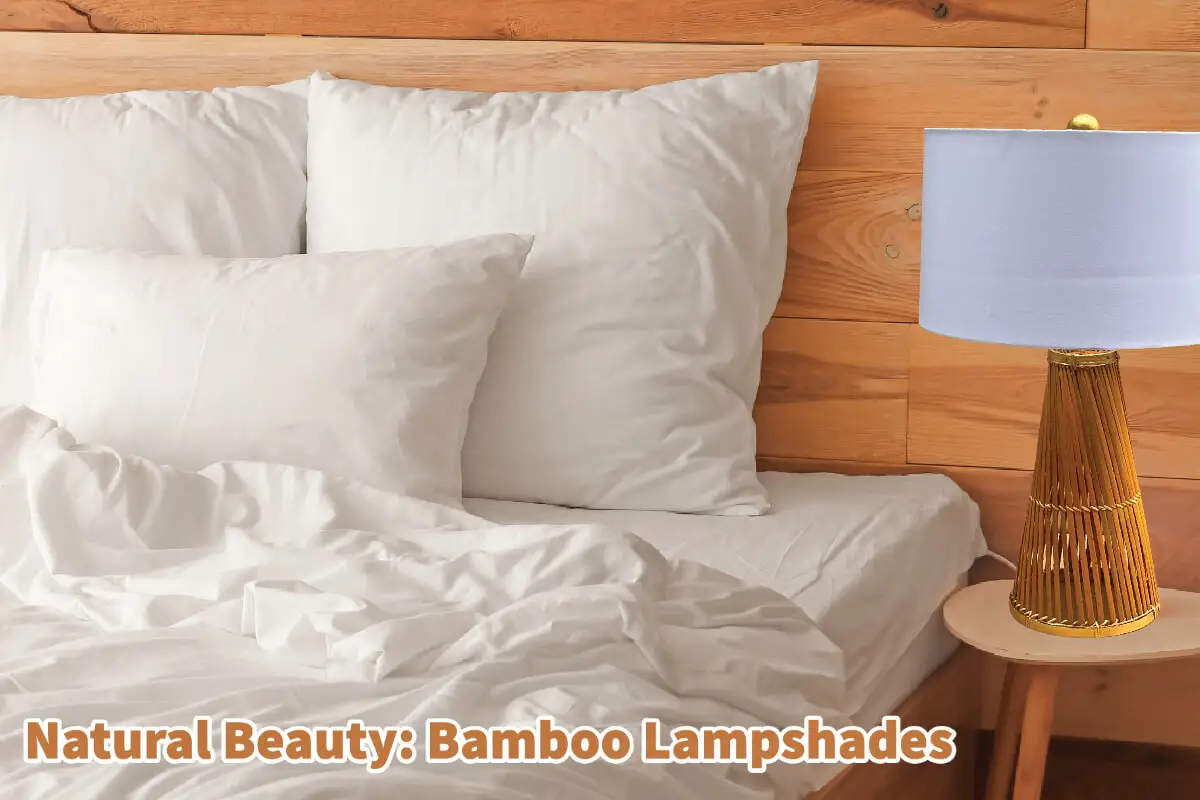A great look that continues to be popular is the natural look. Many people want anything in their homes that have natural touches to it.
Natural bamboo lampshades are a stunning and eco-friendly addition to any home decor. As we continue to prioritize environmental consciousness, natural elements have become increasingly popular in interior design. Bamboo, in particular, has gained popularity in recent years due to its sustainability, durability, and beauty. Bamboo lampshades can be used in various settings, including lighting fixtures, sconces, and as lampshades for table or floor lamps.
Read on to discover more about Natural Bamboo Lampshades.
Table of Contents
- Natural Bamboo Lamp Shades And The Natural Trend
- Reasons Natural Bamboo Lampshades Are An Environmentally Conscious Choice
- What Are Natural Bamboo Lampshades Made From?
- Basic Ways Natural Bamboo Lampshades Are Used
- Frequently Asked Questions About Bamboo
- Related Content
Natural Bamboo Lamp Shades And The Natural Trend
As the world continues emphasizing environmental consciousness, natural elements have become popular in interior design. The natural look has taken the design world by storm – from natural woods and stones to plant life.
One way to incorporate this trend into your home is to use natural bamboo lampshades.
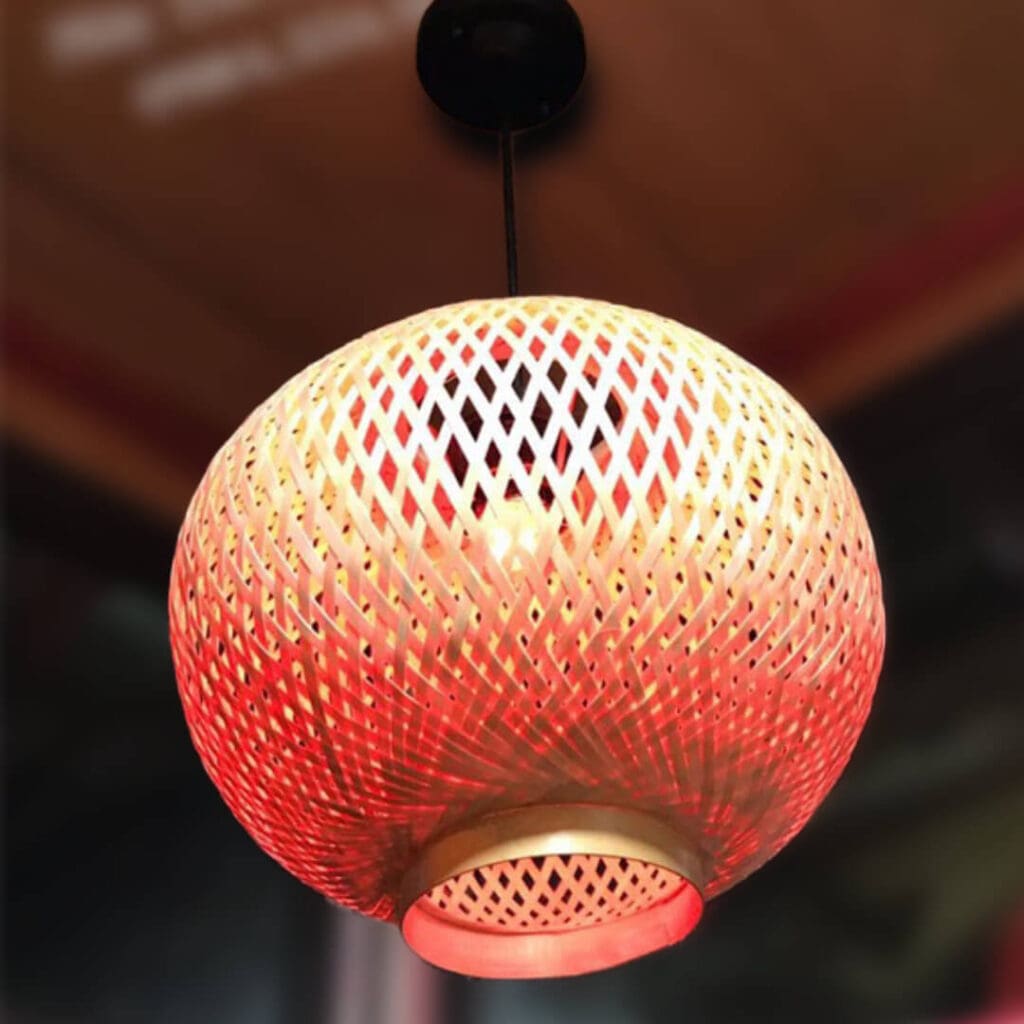
Bamboo lampshades have gained popularity recently due to their natural beauty and versatility. They can be used in various settings, including lighting fixtures, sconces, and lampshades for table or floor lamps.
They continue to be a popular choice for many people to put into their homes and are a vast environmentally conscious choice.
Reasons Natural Bamboo Lampshades Are An Environmentally Conscious Choice
Natural bamboo lampshades exemplify environmental consciousness because bamboo is a sustainable and eco-friendly material. Bamboo is a type of grass known for its fast growth and resilience.
It can grow up to several feet per day and is ready for harvest in just a few years. Bamboo can be harvested much faster than trees, which take several decades to mature.
In addition, bamboo does not require pesticides or fertilizers to grow, making it an environmentally-friendly crop. Unlike other crops, such as cotton, which require water and chemicals, bamboo can thrive in many environments with minimal intervention.
Bamboo production has a much lower environmental impact than many other crops.
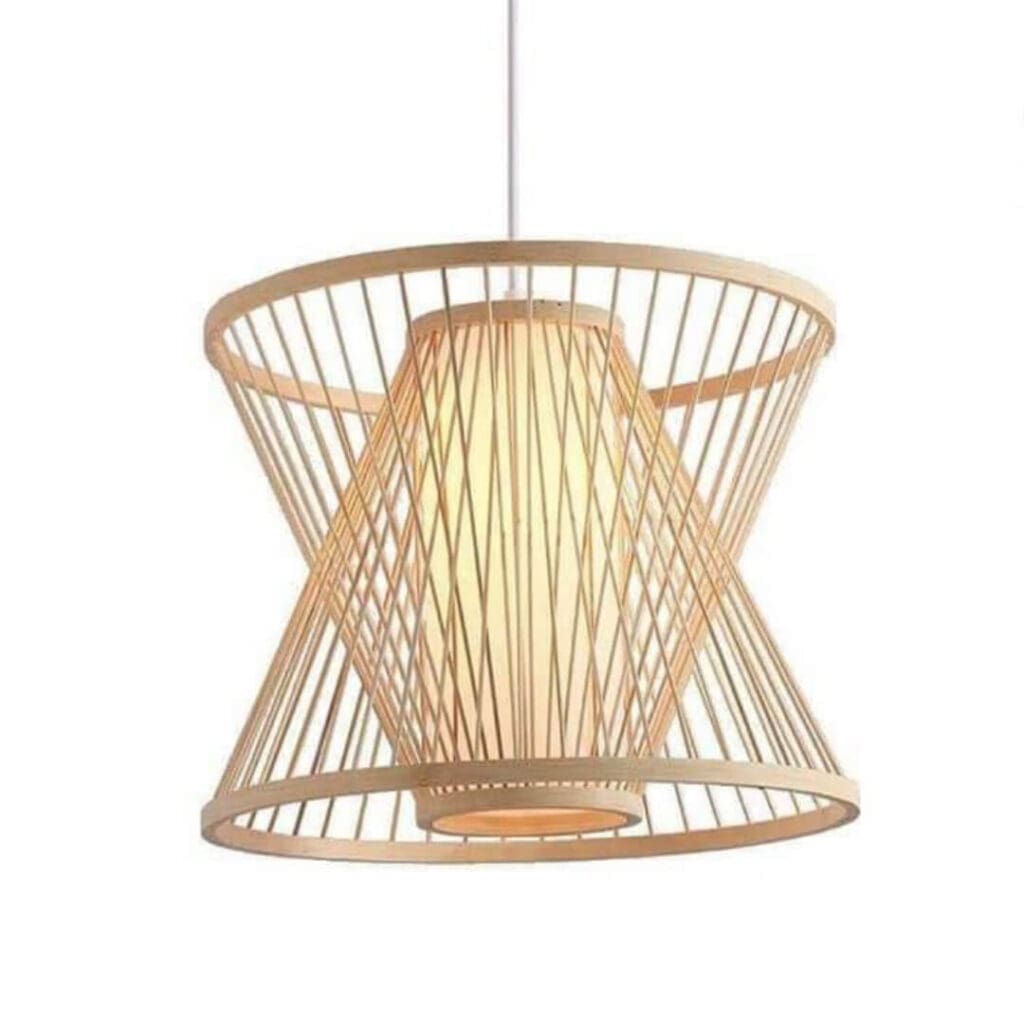
Furthermore, bamboo is also biodegradable, which means that when the lampshade is disposed of, it will break down naturally and not contribute to landfill waste. This is a significant advantage over synthetic materials, which can take hundreds of years to decompose and can release harmful chemicals into the environment as they break down.
By using natural bamboo lampshades in your home, you are making a conscious choice to support sustainable and eco-friendly practices. You are also reducing your carbon footprint by choosing a renewable, biodegradable material that requires minimal resources to grow and produce.
All of these things can help reduce your home’s impact on the environment and can help create a more sustainable future for all of us.
What Are Natural Bamboo Lampshades Made From?
Bamboo lampshades are typically made from bamboo strips that are woven together. The bamboo is cut into thin strips and then woven to create a lampshade. The natural fibers of the bamboo provide a beautiful texture and natural variation in color. The strips are typically woven tightly to create a sturdy and durable shade.
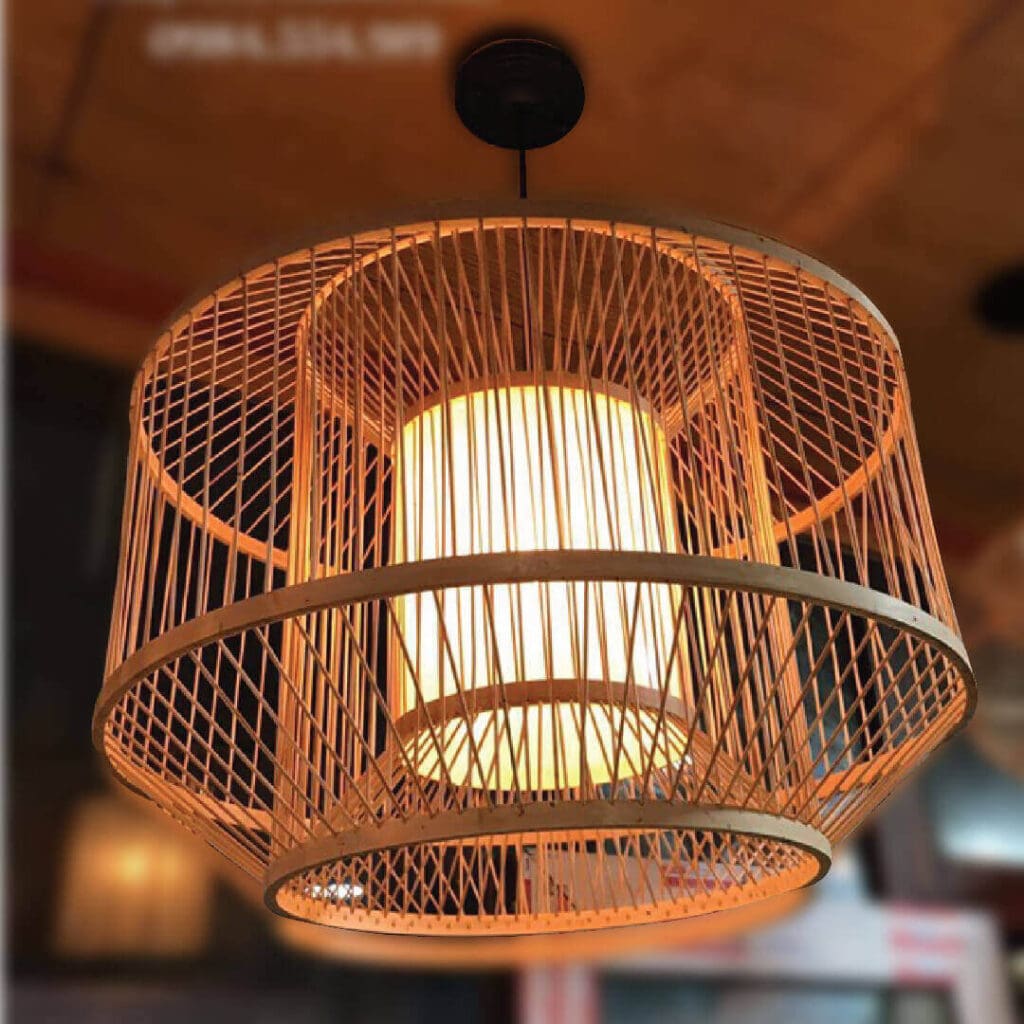
Bamboo is a solid and durable material, making it ideal for lampshades. The natural strength of bamboo makes it resistant to damage from moisture and pests, and it is also less likely to warp or crack over time. Bamboo is also eco-friendly, as it proliferates and can be harvested without damaging the environment.
One of the benefits of bamboo lampshades is that they are straightforward to clean. The shades can be wiped down with a damp cloth or dusted with a soft brush. They are also resistant to stains and odors, making them an excellent choice for areas prone to spills or accidents.
Basic Ways Natural Bamboo Lampshades Are Used
Natural bamboo lampshades are a beautiful and sustainable way to bring a touch of nature into your home decor. These versatile lampshades can be used in various settings, from lighting fixtures to table and floor lamps.
The lampshade can add a warm and calming ambiance to any space and are perfect for creating a cozy and inviting atmosphere.
Here are some of the ways that Bamboo Lampshades are frequently used:
Bamboo Lampshades In Lighting Fixtures
Bamboo lampshades can be used in lighting fixtures to add texture and warmth to a room. The natural fibers of bamboo provide a warm and calming ambiance, which can create a cozy and inviting atmosphere.
The shades can be used in pendant lights, chandeliers, and other fixtures.
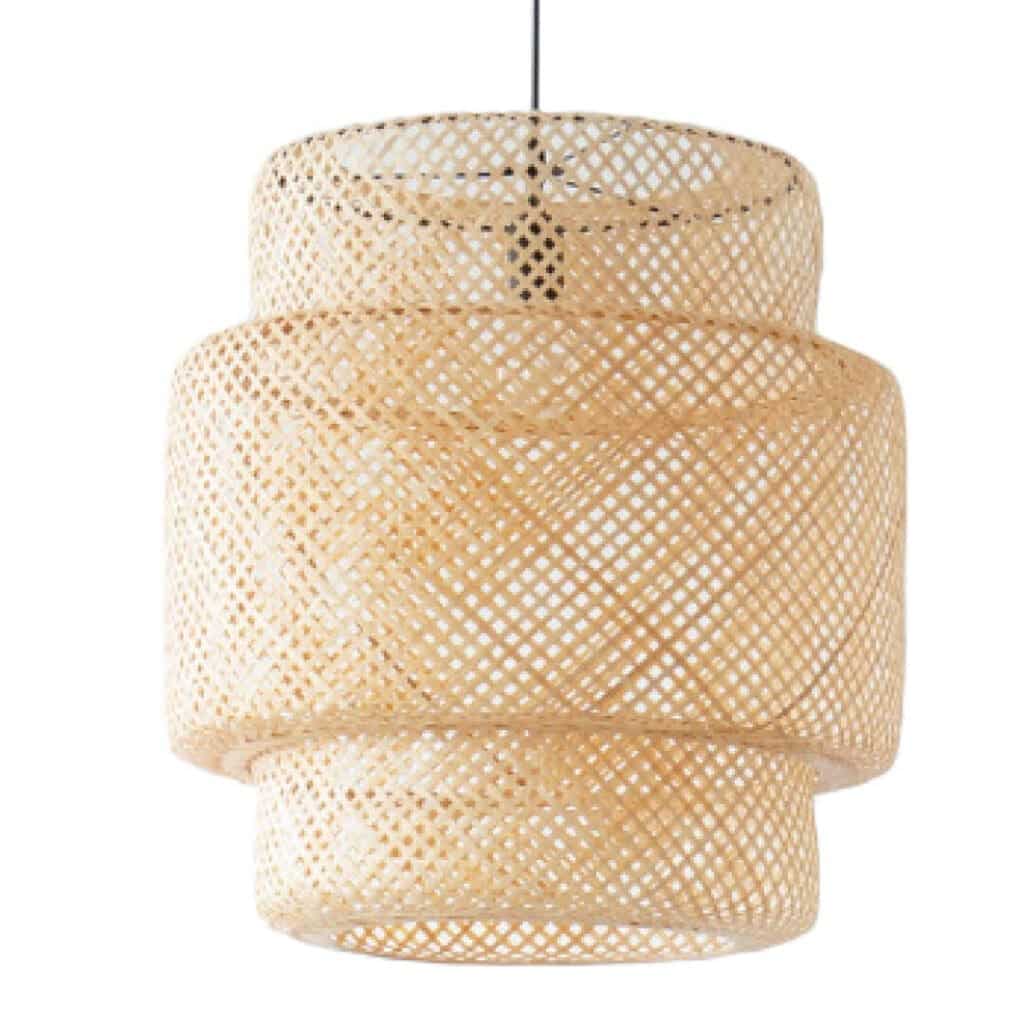
Bamboo lampshades can soften the light in pendant lights and provide a diffused glow. The natural texture of the bamboo will also add a touch of elegance to the fixture.
In chandeliers, bamboo lampshades can be used to create a dramatic effect. The shades will cast a beautiful pattern of light and shadow on the walls and ceiling, creating a stunning visual display.
Bamboo Lampshades In Sconces
Bamboo lampshades can also be used in sconces to create a unique and stylish look. Sconces are a great way to add ambient lighting to a room, and bamboo shades can add a touch of natural elegance to the fixture.
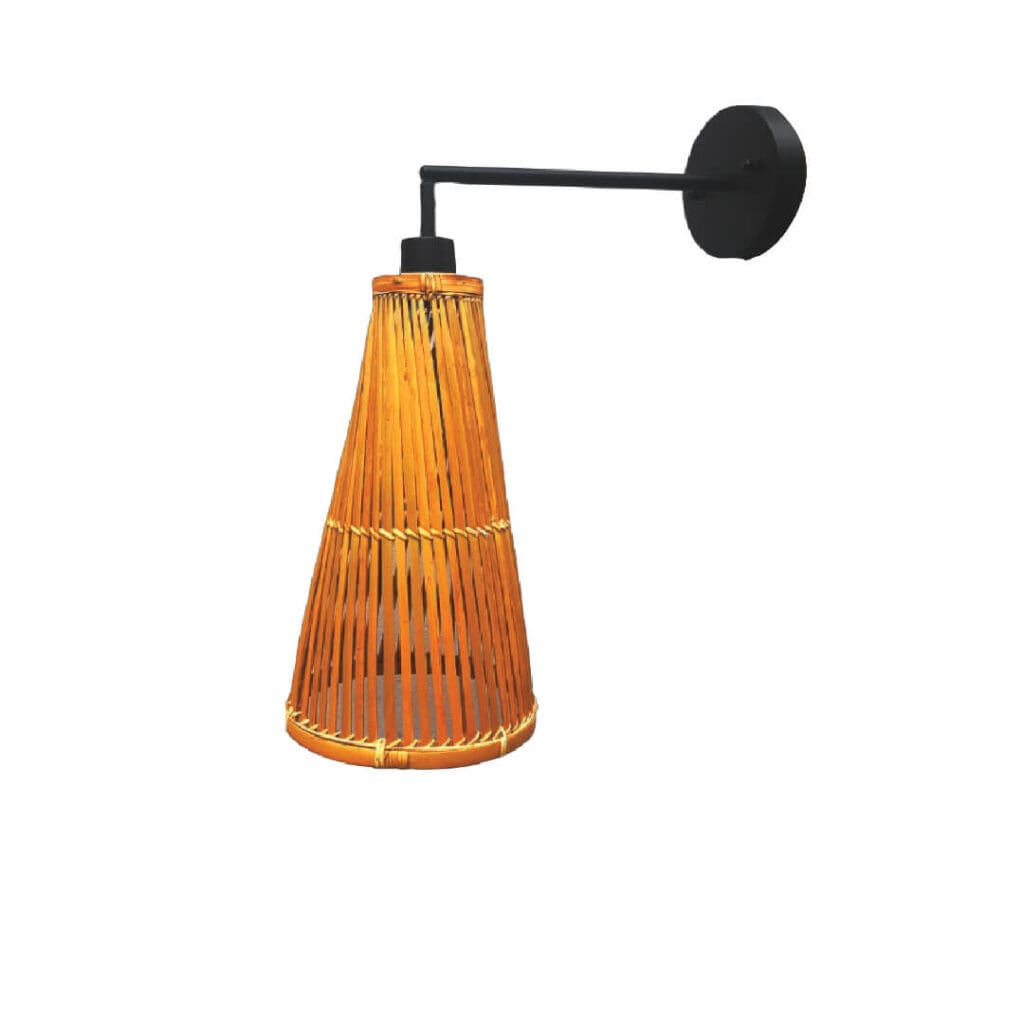
The shades can be used in various sconces, from traditional wall sconces to modern, minimalist designs.
Bamboo Lampshades For Table Or Floor Lamps
Bamboo lampshades can also be used as lampshades for table or floor lamps. These lampshades can add a natural touch to any room, creating a calming and serene atmosphere.
The shades can be used in various lamp designs, from modern to traditional.
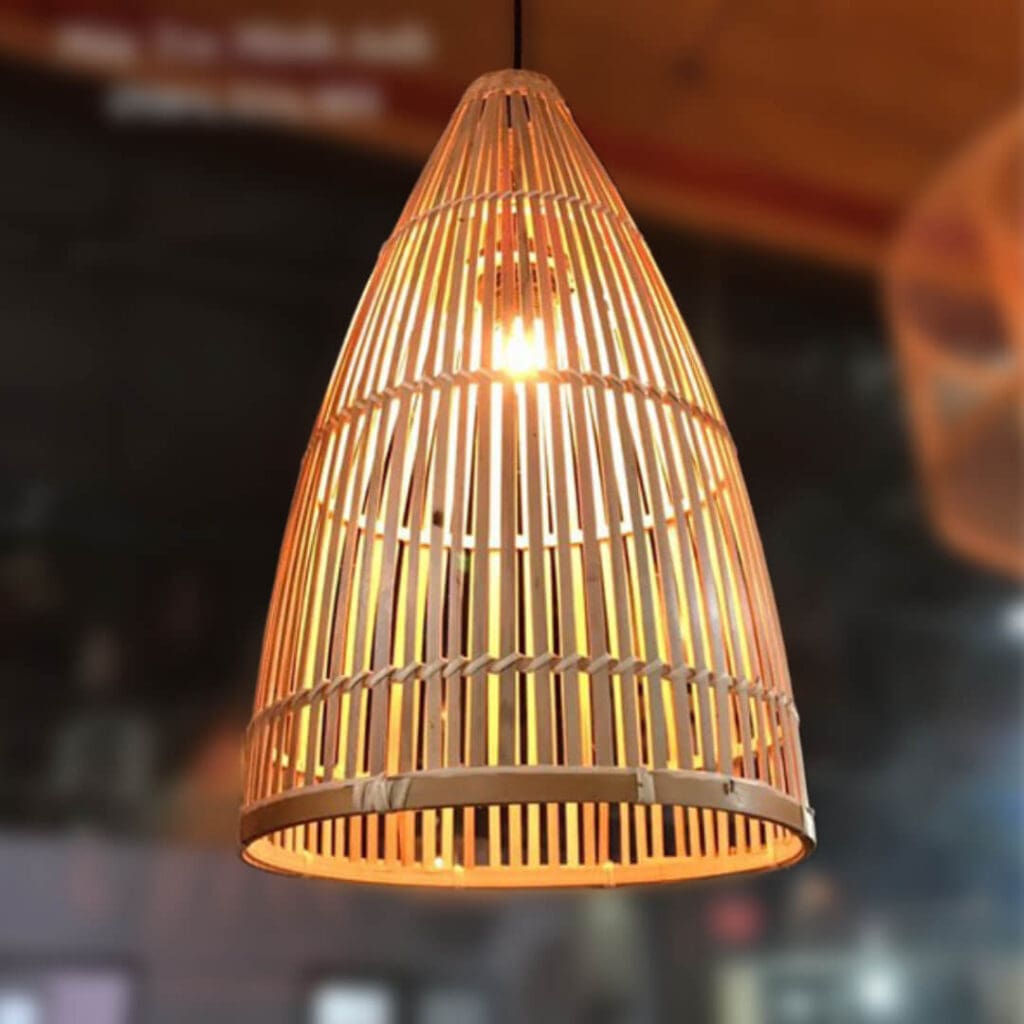
Bamboo lampshades are a great way to add a touch of natural beauty to any room. They can be used in various lighting fixtures, sconces, and table or floor lamps as lampshades.
Bamboo is a strong and durable material, making it an ideal lampshade choice. It is also an eco-friendly material, making it an excellent choice for those who want to incorporate sustainable materials into their home décor.
If you want to add natural beauty to your home, consider incorporating bamboo lampshades into your design.
Find out more about how Mondoro can help you create, develop, and manufacture excellent home decor and furniture products – don’t hesitate to contact me, Anita. Check out my email by clicking here or become a part of our community and join our newsletter by clicking here.
Mondoro gives out a FREE Lookbook to anyone interested. You can receive a copy of our latest Lookbook by clicking here.
Listen to our Podcast called Global Trade Gal. You can find it on all major podcast platforms. Try out listening to one of our podcasts by clicking here.
Subscribe to our Mondoro Company Limited YouTube Channel with great videos and information by clicking here.
Frequently Asked Questions About Bamboo
How strong is bamboo compared to wood?
Bamboo is stronger than most woods. It has a tensile strength of 28,000 per square inch, compared to 23,000 for steel.
Is bamboo environmentally friendly?
Yes, bamboo is an extremely eco-friendly material. It grows very quickly and is easily renewable, and it doesn’t require pesticides or fertilizers to grow.
How does bamboo compare to other materials in terms of sustainability?
Bamboo is a very sustainable material, especially compared to other wood products. It grows quickly, doesn’t require as much water as other crops, and can be harvested without damaging the environment.
Can bamboo be used as a building material?
Yes, bamboo is a very versatile material and can be used for a variety of building purposes. It’s beneficial for constructing structures that need to be flexible or have a natural, organic look.
How does bamboo compare to other woods in terms of strength?
Bamboo is stronger than most woods, including oak and maple. It has a higher tensile strength and is more resistant to compression and bending.
How does bamboo affect the environment?
Bamboo has a positive impact on the environment. It helps to reduce soil erosion and provides habitat for many different types of wildlife. Additionally, it doesn’t require as much water as other crops, which helps to conserve resources.
How does bamboo compare to other materials in terms of versatility?
Bamboo is a very versatile material that can be used for various applications. It can be used for building, furniture, flooring, and clothing.
Is bamboo stronger than steel?
Bamboo has a higher tensile strength than steel, which means it’s better able to resist pulling forces. However, steel is still stronger than bamboo regarding compressive strength.
How does bamboo compare to other materials in terms of weight?
Bamboo is a lightweight material, which makes it a popular choice for applications where weight is a concern. It’s lighter than many types of wood but still has a high strength-to-weight ratio.
Related Content
What Is Stronger Rattan Or Bamboo?
Bamboo is more robust than rattan. Some bamboo is known even to have a higher tensile strength than steel; this is why bamboo is used as scaffolding in construction in many parts of Asia. Rattan is a vine that grows in the jungles; when rattan is manufactured into furniture, it can be solid.
You can learn more by reading our blog, What Is Stronger Rattan Or Bamboo? by clicking here.
How Do You Make A Bamboo Lamp Shade? All About Bamboo Lampshades
To manufacture or make bamboo lampshades, you need to 1) properly prepare the bamboo materials, 2) build a metal frame, 3) wrap the metal frame, 4) secure the bamboo onto the metal frame, 5) spray color on top of the bamboo shade if you desire the lampshade to be a color other than natural and 6) spray a top coat on the entire shade to protect the bamboo shade’s finish.
You can read our blog about How Do You Make A Bamboo Lamp Shade? All About Bamboo Lampshades by clicking here.
Rattan Vs. Bamboo – The Differences Between The Materials Explained
Rattan and bamboo are not the same material, as they have different characteristics and uses. For example, bamboo is hollow and grows straight as a tree would. Rattan is a solid material easily bent and grows in rainforests as a vine.
You can learn more by reading our blog, Rattan Vs. Bamboo – The Differences Between the Materials Explained, by clicking here.

